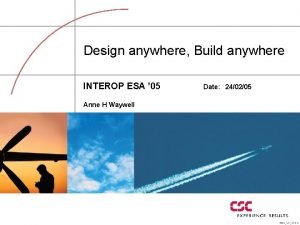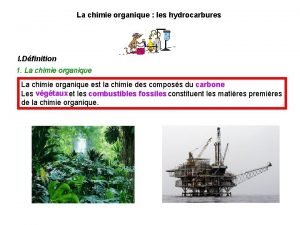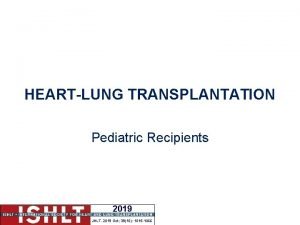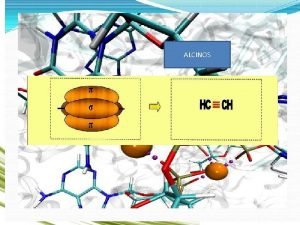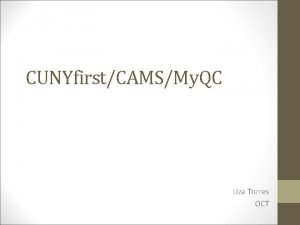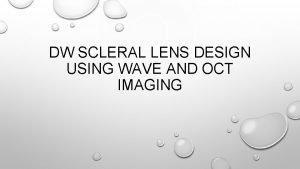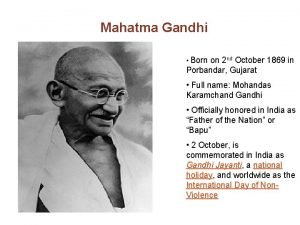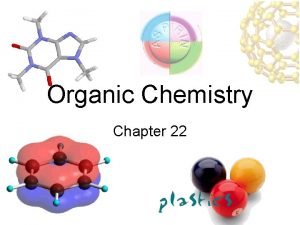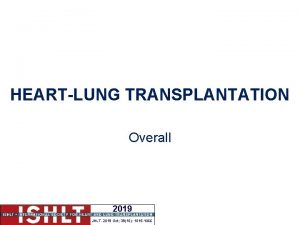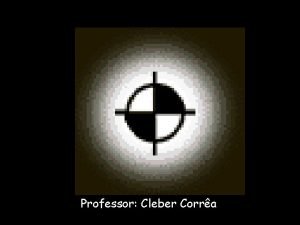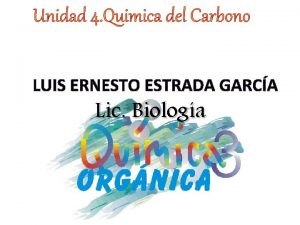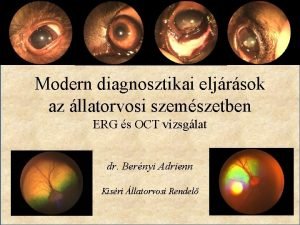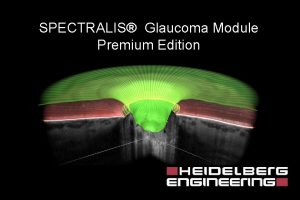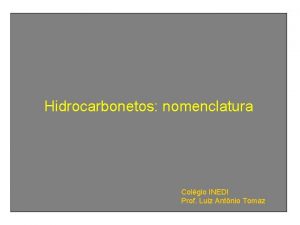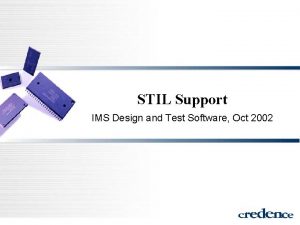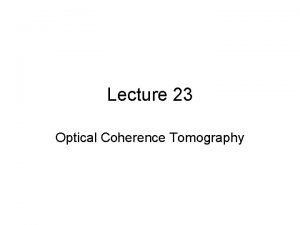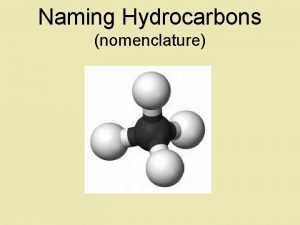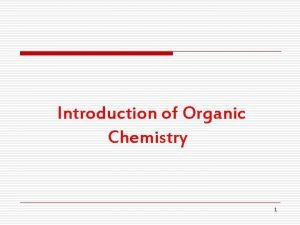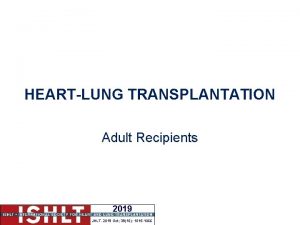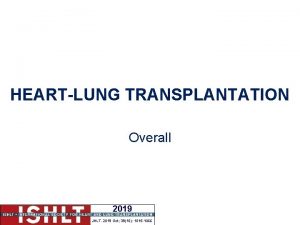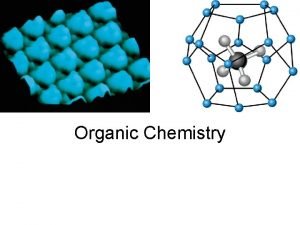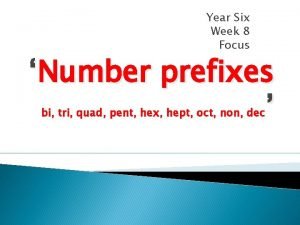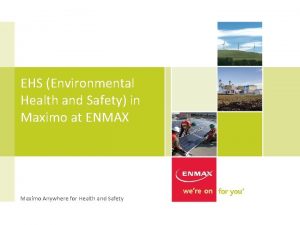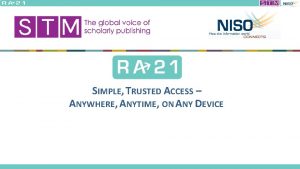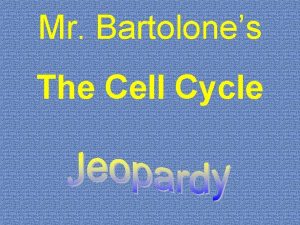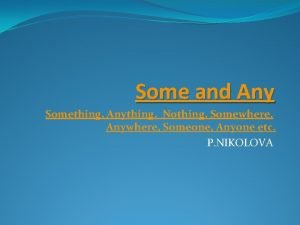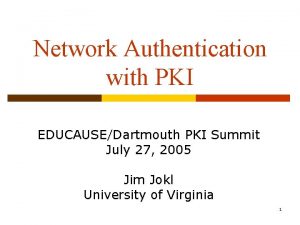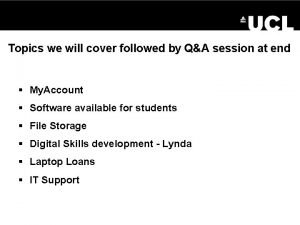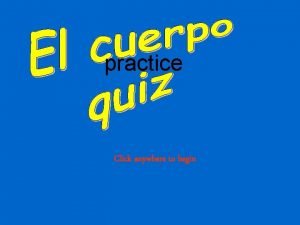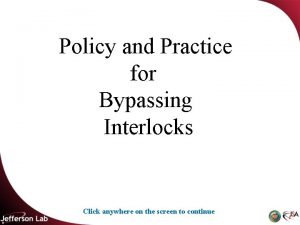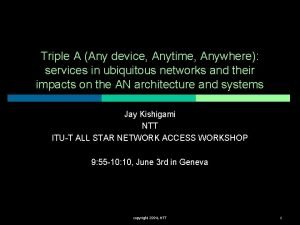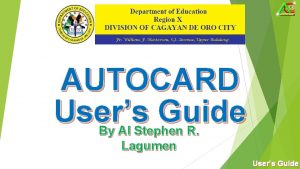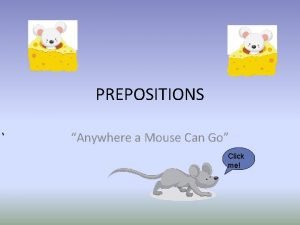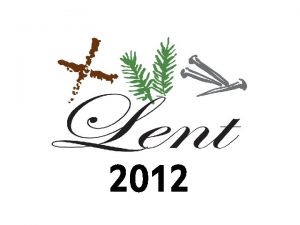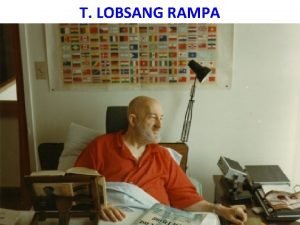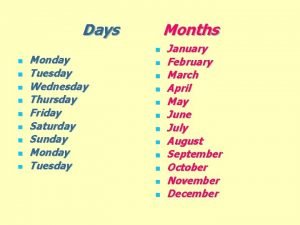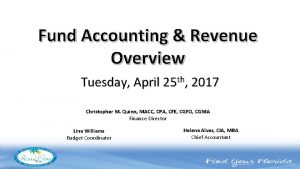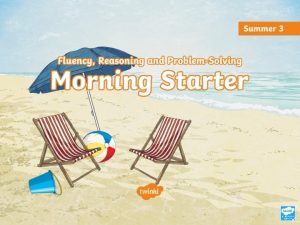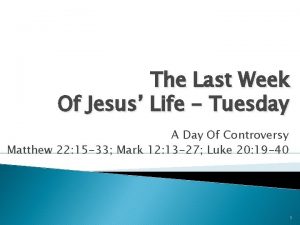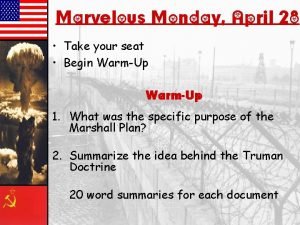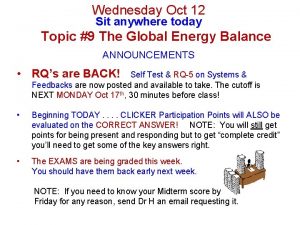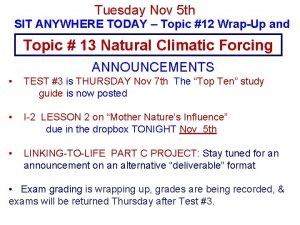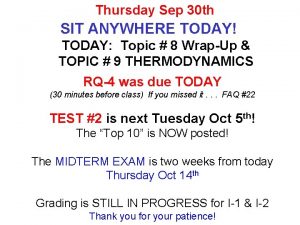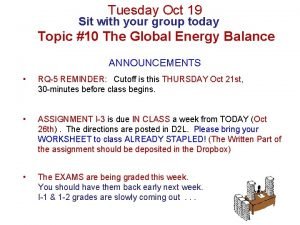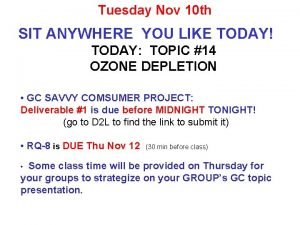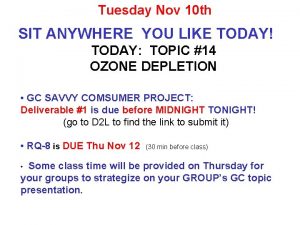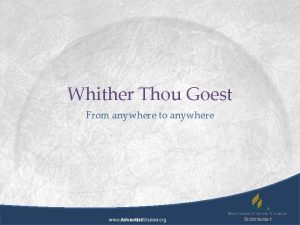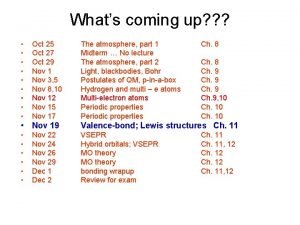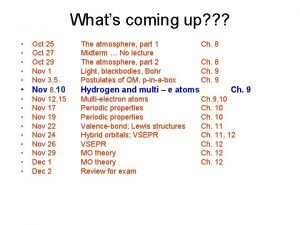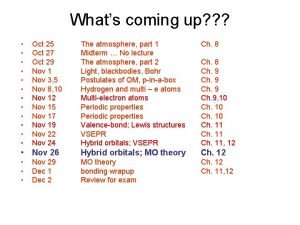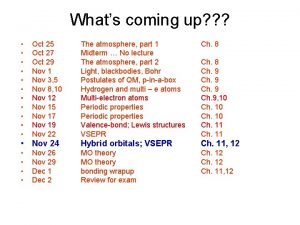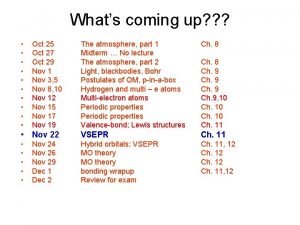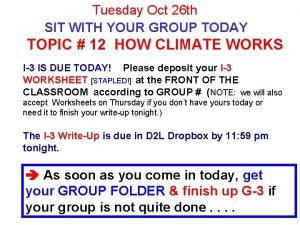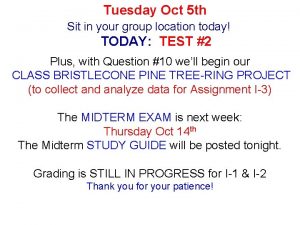Tuesday Oct 19 SIT ANYWHERE TODAY Topic 10































































































- Slides: 95

Tuesday Oct 19 SIT ANYWHERE TODAY: Topic #10 The Global Energy Balance & 2 Sustainability Segments! ANNOUNCEMENTS • RQ-5 REMINDER: Cutoff is this THURSDAY Oct 21 st, 30 -minutes before class begins. • ASSIGNMENT I-3 is due IN CLASS a week from TODAY (Oct 26 th). The directions are posted in D 2 L. Please bring your WORKSHEET to class ALREADY STAPLED! (the Written Part of the assignment should be deposited in the Dropbox) • REMEMBER TO CHECK THE WEEKLY D 2 L CHECKLIST for what to do each week. NOTE: We’ll be reading more in the Dire Predictions text in upcoming weeks. • The EXAMS are being graded this week. You should have them back early next week.

CLICKER UPDATE: - If get >50% of answers correct, get credit for being here today

GOAL: Enhanced Understanding Of Global Change Science, How It Operates, & What It Means To Me Personally ce cien te S ild Bu Clim a ndin g rsta Und e Physical Science foundation (matter& energy, electromagnetism, thermodynamics, laws of motion) The Science of Global Change 1 - 7 s # iple Global Climate Change processes rinc How science is done OBSERVATIONS al P On b sci eing en tist a Past & Present enti “H as ands sig nm on” en ts MODELS “ m Thi at nk er in ia g I l a de ! de i s c de se eply m ” le es ab b i ss ns o te ou P tio rp t u l so ro cou y v gr rs v a r S es e e GC nsum r se Co othe nts s Ess W we hat kn can & w ow is ha un stil t ce l rta in Future projections in as g o se n m m y es a te tta r in pr ed og k re no ss wl e s ed ge Climate Science Literacy & me ign ass l na s o s r Pe renes a aw lity i b a ain nts t s Su egme S How it links to my life


GLOBAL CHANGE in the News! http: //green. blogs. nytimes. com/2010/10/18/lake-mead-hits-record-low-level/? hp

GLOBAL CHANGE in the News! http: //www. noaanews. noaa. gov/stories 2010/20101015_globalstats. html


Topic # 10 THE EARTH’S GLOBAL ENERGY BALANCE Applying the laws, etc. to understand how processes all work together to create global weather & climate!! BOOKMARK pp 49 & 122 in Class Notes now for lecture today

Today’s Quote: A Different Sort of “ENERGY BALANCE”: Look at life as an energy economy game. Each day, ask yourself, Are my energy expenditures (actions, reactions, thoughts, and feelings) productive or nonproductive? During the course of my day, have I accumulated more stress or more peace? ~ Doc Childre and Howard Martin

Review: Absorption curve for the “Whole Atmosphere” OVERALL BALANCE: Incoming = Outgoing LW thru UV / Vis atmospheric window Incoming SW UV Visible NIR thru IR atmospheric window Far IR Review

Typical Energy Balance Diagram mesoscale. agron. iastate. edu/agron 206/animations/10_Atmo. Ebal. html From SGC-I Chapter 3, p 50, Fig 3 -19 Similar to p 49 in Class Notes

Energy Balance Equation: Rnet = (Q + q) - a - Lu + Ld = H + LE + G (one of several ways this equation can be written)

Let’s try to find an easy way to understand remember all the components of the Earth’s Energy Balance We’ll use “cartoon symbols”. . .

“CARTOON” SYMBOLS: To represent the Earth’s surface: Go to p 122

“CARTOON” SYMBOLS: To represent the atmosphere – composed of both invisible gases, aerosols, dust and other particulate matter: p 122


“CARTOON” SYMBOLS: To represent CLOUDS p 122

“CARTOON” SYMBOLS: To represent SOLAR (shortwave) radiation coming in DIRECTLY. (aka Direct shortwave radiation) p 122

Direct SW radiation easily casts welldefined shadows when blocked Take notes

“CARTOON” SYMBOLS: To represent SOLAR (shortwave) radiation coming in as DIFFUSE shortwave radiation, i. e. scattered by gases, clouds, and particles in the atmosphere. p 122

Scattered, but still transmitted! Diffuse SW radiation is less likely to cast a well-defined shadow! Take notes

Different sized dust particles, water droplets, aerosols, (even gas molecules themselves) Scattering of visible light review

An “aerosol-laden” atmosphere scatters the longer (red) wavelengths more readily “Clear” atmosphere composed primarily of fine particles, water droplets, gas molecules “Dirty” (aerosol-laden) atmosphere composed of fine particles, gases, & H 2 O -- PLUS larger dust particles, aerosols, pollution, etc.

ALSO: The angle at which direct SW radiation is intercepted by a surface makes a difference!! Radiation is concentrated over a small area & hence is more intense when it comes in perpendicular to the surface Radiation is spread out over a larger area & hence is less intense per unit area when it comes in at an angle. From Figure on p 37 in SGC-I, Ch 3

Scenario 1: NOON at Point A Scenario 2: Late afternoon at Point A A Q 1: which scenario will deliver MORE INTENSE radiation to Point A? 1 = Scenario 1 2 = Scenario 2

Q 2 = WHY is the intensity of the SW radiation at Point A not as strong in the late afternoon as it is at noon? 1 = because as the Sun goes down close to sunset time, it gives off less radiation 2 = because the SW radiation is coming in at an angle in the late afternoon, and is not directly overhead (perpendicular) like it is at noon. 3 = because the SW radiation is being transmitted through a thicker atmosphere & hence scattered more BOTH #2 & #3 are applicable!

“CARTOON” SYMBOLS: To represent SOLAR (shortwave) radiation that is REFLECTED (or scattered) BACK TO SPACE by: atmosphere, clouds, Earth’s surface, etc. p 122

New term: ALBEDO = reflectivity of a surface “symbol” = a Represented as: a decimal from 0 to 1. 0 or % from 0 – 100 % (perfect reflectivity) Hence, amount ABSORBED = (1 – albedo) Flip back to p 49

YIKES! If a surface’s albedo is HIGH, absorption by the surface is LOW COOLER surface If a surface’s albedo is LOW absorption by the surface is HIGH => HOTTER surface!

Low albedo High albedo CLOUDS: 0. 44 (high, thin clouds) - 0. 90 (low, thick clouds) AVERAGE PLANET EARTH = ~ 0. 30 p 49

Q 3: What will happen to incoming SW over the Amazon Rain Forest if parts of it are deforested? 1 = more SW will be absorbed 2 = less SW will be absorbed Before After

“CARTOON” SYMBOLS: To represent TERRESTRIAL (longwave IR) radiation emitted upward by the Earth’s surface or the atmosphere Return to p 122

“CARTOON” SYMBOLS: To represent TERRESTRIAL (longwave IR) re-radiation emitted downward by the Earth’s ATMOSPHERE p 122

PUTTING IT TOGETHER: Can you place + and – signs where they ought to go in the equation? RNET = + RNET= (Q + q) - + a - Lu + Ld p 123

Now we’ll look at the energy pathways in a bit more detail by combining the cartoon symbols in various ways. . . See top p 49

First, what if. . . The Earth didn’t have an atmosphere, and therefore didn’t have a greenhouse effect? ? What would the energy pathways in the Earth-Sun system look like?

Which terms are not involved? No scattering by atmosphere No re-radiation of infrared by GHG’s

To describe the real Earth. Atmosphere system, more detail is needed in our simple representation. . . We’ll use our symbols to build an energy balance “model” p 123

SW BEAMED DIRECTLY TO EARTH’S SURFACE WHERE IT IS ABSORBED: Incoming SW p 123

SW REFLECTED BACK TO SPACE: By clouds By Earth’s surface This is determined by the ALBEDO of the clouds or surface p 123

SW SCATTERED BACK TO SPACE BY ATMOSPHERE: p 123

SW SCATTERED DOWN TO EARTH’s SURFACE where it is absorbed p 123

SW ABSORBED IN ATMOSPHERE BY GASES, DUST, etc. (including Ozone absorbing shortwave UV) Incoming UV SW absorbed by O 3, O 2 Incoming Visible SW absorbed by dust, O 3, O 2 p 123

SW ABSORBED In ATMOSPHERE BY CLOUDS & H 2 O vapor: (NOTE: clouds are made up of tiny droplets of water surrounded by lots of water vapor) Incoming Visible & Near IR SW absorbed by water vapor & clouds Absorption curve for water vapor p 124

LW (IR) EMITTED FROM EARTH’S SURFACE ESCAPING TO Outgoing LW SPACE THROUGH THE “OUTGOING IR ATMOSPHERIC WINDOW” p 124

IR EMITTED FROM EARTH’S SURFACE BUT ABSORBED IN THE ATMOSPHERE BY GREENHOUSE GASES (H 2 O, CO 2, CH 4, ETC. ) p 124

IR EMITTED FROM ATMOSPHERE ESCAPING TO SPACE p 124

IR EMITTED FROM ATMOSPHERE AND RADIATED BACK TO SURFACE WHERE IT IS ABSORBED p 124

All together now: Can you sketch all the pathways in yourself? p 124

Compare with simpler model of energy balance with NO atmosphere: p 125

Which terms are not involved? No scattering by atmosphere No re-radiation of infrared by GHG’s NOTE: Technically, the SUN does give off incoming longwave infrared radiation (in addition to shortwave UV, visible, etc. ) – but if we view the incoming LW symbol above as TERRESTRIAL radiation that has been absorbed and RE-RADIATED BACK TO EARTH by the GHG’s in the atmosphere, this simplification is correct. p 125

Earth’s average albedo: 23 + 8 = 31 12 + 48 + 9 = 69 Outgoing IR START HERE 23 100 8 12 48 9 3 20 18 GHE H 20 = 15 O 3 +others = 3 102 8 3 H 48 48 - 114 + 95 = 29 =0 114 95 G + H + LE 0 + 7 + 22 = 29 = Rnet 7 22 Back to p 49

Two Energy Balance Animations showing energy flow pathways & “units” of energy that eventually balance out: GLOBAL ENERGY BALANCE & PATHWAYS: http: //earthguide. ucsd. edu/earthguide/diagrams/energybalance/index. html SHORTWAVE & LONGWAVE ENERGY FLOW & BUDGET: http: //mesoscale. agron. iastate. edu/agron 206/animations/10_Atmo. Ebal. html

ZOMBIE BREAK !

A new “SUSTAINABILITY SEGMENT” FILM HBO Documentary ( 2006 )

BACK TO THE BALANCE!

NET RADIATION = In – Out = Whatever is left over If some energy is “left over, ” it can be used to DRIVE WEATHER & CLIMATE through HEAT TRANSFER processes or it can STORED by the Earth (in the ground or ocean). p 50 top

FINAL PART OF TOPIC #10: The RIGHT side of the ENERGY BALANCE EQUATION. . .

Left side of equation Right side of equation R net = “net” left over energy can be used to DRIVE WEATHER & CLIMATE through HEAT TRANSFER processes or it can STORED by the Earth (in the ground or ocean). p 50 top

Review of: THERMODYNAMICS & HEAT TRANSFER Conduction = passage of thermal energy through a body without large‑scale movement of matter within the body. Most effective in SOLIDS. Convection = passage of thermal energy through a fluid (liquid or gas) by means of large‑scale movements of material within the fluid, as in a convection cell. Most effective in GASES & LIQUIDS. Radiation = the transfer of thermal energy by electromagnetic radiation. The only one of the three mechanisms of heat transfer that does not require atoms or molecules to facilitate the transfer process, i. e. , does not even need MATTER as a medium to transfer energy! p 51

CONVECTION Mass of warm air or liquid heats, expands, rises CONDUCTION Jiggling molecule jiggling molecule transfer of heat (kinetic energy at molecular scale) RADIATION Photon /wave transport: even through a void! of p 61 review

HEAT TRANSFER & STORAGE DURING PHASE CHANGES: LE & H LE = LATENT (hidden) ENERGY (LE stored) (LE released, hence it can be sensed as H) H = SENSED (via thermometer) ENERGY Review p 51

Link to the Left Side of Equation: Radiation = the transfer of heat by electromagnetic radiation. It doesn’t need MATTER to transfer energy! (sun earth, earth atmosphere, atmosphere earth, earth space)

Link to the Right Side of Equation: Conduction & convection plus energy stored & released during phase changes (latent energy => sensible heat, etc. ) p 51

G Back to p 50

Encore: Energy Balance Animation showing energy flow pathways & “units” of energy that eventually balance out: SHORTWAVE & LONGWAVE ENERGY FLOW & BUDGET: http: //mesoscale. agron. iastate. edu/agron 206/animations/10_Atmo. Ebal. html

AMAZON RAIN FOREST SONORAN DESERT

Will the % of net radiation in LE form be HIGHER or LOWER in the Desert, when compared to a Rainforest? FOREST

What if humans put in canals (CAP), lakes, & artificial water bodies in a desert? Central Arizona Project (CAP) Canal

What if humans put in How would the % of LE in canals (CAP), lakes, & the Desert change? artificial water bodies in a desert?

How does DEFORESTATION change the local energy balance? ? ? Less More cooler temperatures? More warmer temperatures?

G-3 ASSIGNMENT (5 pts) Applying the Energy Balance Terms Your task is to decide which component or components working together are most directly related to or responsible for the observed phenomenon. # 1 – #12 : Left side of equation # 13 - #15: Right side of equation p 53

1. blue skies 2. Sunglasses while skiing 3. Bright even though cloudy

4. More intense solar radiation (tan /skin damage, etc. ) at noon vs. dawn or dusk Sun directly overhead NOON DAWN or DUSK Sun just above horizon Solar rays perpendicular to body 5. The Greenhouse Effect

To illustrate the GREENHOUSE EFFECT: SUN EARTH Greenhouse effect SUN EARTH C the BAis better than the B others. . . But only circled part represents the GH Effect!!. . .

6. Red sunsets 7. Infrared cameras / “night vision” 8. “Tennis whites” tradition

9. Shadow on sunny day 10. Rainbow 11. Black streaks 12. Parking on blacktop

13. Hot air balloon 14. Pigs cooling off in the mud 15. Evaporative coolers work best in the desert

TIME TO WRAP UP FOR TODAY! G-3 ASSIGNMENT (5 pts) (cont. ) Applying the Energy Balance Terms Your task is to decide which component or components working together are most directly related to or responsible for the observed phenomenon. Don’t forget to SIGN IN with the #’s you wrote up! p 53

THE ANSWERS

The LEFT side of the equation: 1. gases of atmosphere scatter shorter blue wavelengths 3. 2. 4. Noon: more 5. + dusk: more together = the Greenhouse Effect

6. (dust, thicker atmosphere longer red/orange wavelengths) 7. scatters radiates day & night; camera senses IR 8. 9. leads to distinct shadows, while diffuse SW radiation does not

10. All visible wavelengths scattered & transmitted in a colored spectrum by raindrops 11. Attempt to increase absorption & reduce into eyes; reduces glare 12. More is absorbed, leads to more can then warm up car which

The RIGHT Side of the Equation: 13. H Hot air (less dense than surrounding cool air) rises in a convection current & lifts balloon LE 14. Wet mud evaporates from pig & cools him: Heat from pig’s body is conducted into soil: G 15. June is dryer, hence air can hold more water vapor, more evaporation occurs, hence more energy goes into instead of LE H

BE SURE TO REVIEW THE CLASS FOLLOW-UP IF YOU WANT TO GO OVER THESE ANSWERS AGAIN. . . See you on Thursday Don’t forget RQ-5!





SOME APPLICATIONS OF THE ENERGY BALANCE IN DIFFERENT PARTS OF THE GLOBE: http: //www. earthweek. com/


GLOBAL CHANGE in the News! Warmer-than-average conditions dominated the world’s land areas. The most prominent warmth was in western Alaska, most of the contiguous United States, eastern Canada, Greenland, the Middle East, eastern and central Europe, western and far eastern Russia and northeastern Asia. Cooler-than-average regions included much of Australia, western Canada, parts of the northern United States, parts of western and central Europe, and central Russia. This year also marked the 14 th consecutive September with belowaverage Arctic sea ice extent. Antarctic sea ice reached its annual maximum in September 2010 was the third largest sea ice extent on record (2. 3 percent above average), behind 2006 (largest) and 2007 (second largest).

http: //psc. apl. washington. edu/Arctic. Seaice. Volume/Ice. Volume. php http: //nsidc. org/data/seaice_index/index. html

This summer marks the fourth consecutive year--and fourth time in recorded history--that the fabled passage has opened for navigation. Over the past four days, warm temperatures and southerly winds over Siberia have also led to intermittent opening of the Northeast Passage, the shipping route along the north coast of Russia through the Arctic Ocean. It is now possible to completely circumnavigate the Arctic Ocean in ice-free waters, and this will probably be the case for at least a month. This year marks the third consecutive year--and the third time in recorded history--that both the Northwest Passage and Northeast Passage have melted free, according to the National Snow and Ice Data Center. The Northeast Passage opened for the first time in recorded history in 2005, and the Northwest Passage in 2007. It now appears that the opening of one or both of these northern passages is the new norm, and business interests are taking note--commercial shipping in the Arctic is on the increase, and there is increasing interest in oil drilling. The great polar explorers of past centuries would be astounded at how the Arctic has changed in the 21 st century. http: //www. wunderground. com/blog/Jeff. Masters/comment. html? entrynum=1589 Antarctic vs Arctic. . . http: //nsidc. org/seaice/characteristics/difference. html

http: //climateprogress. org/2010/08/28/arctic-sea-ice-volumenorthwest-passage-david-barber-antarctic-sea-ice/
 Injustice anywhere is a threat to justice everywhere essay
Injustice anywhere is a threat to justice everywhere essay Metaphasepdm
Metaphasepdm Sit means sit nashville
Sit means sit nashville Is today tuesday
Is today tuesday Example of repitition
Example of repitition Today meeting or today's meeting
Today meeting or today's meeting Galton details
Galton details Today meeting or today's meeting
Today meeting or today's meeting Today's lesson or today lesson
Today's lesson or today lesson Do we have class today
Do we have class today Clincher in writing
Clincher in writing Narrowing down a topic exercises
Narrowing down a topic exercises Méth eth prop but
Méth eth prop but Butanoat de metil
Butanoat de metil Jhlt. 2019 oct; 38(10): 1015-1066
Jhlt. 2019 oct; 38(10): 1015-1066 Forneça a nomenclatura correta para os seguintes alcinos
Forneça a nomenclatura correta para os seguintes alcinos Cuny cams
Cuny cams Scleral lens oct
Scleral lens oct When gandhi born
When gandhi born Prop but pent hex hept oct
Prop but pent hex hept oct What is chemistry
What is chemistry Sunset oct 31
Sunset oct 31 Homologous series formula
Homologous series formula Jhlt. 2019 oct; 38(10): 1015-1066
Jhlt. 2019 oct; 38(10): 1015-1066 Met et prop but pent hex hept oct non dec
Met et prop but pent hex hept oct non dec Compuestos quimicos
Compuestos quimicos Oct 3 1993
Oct 3 1993 Dodawanie w systemie czwórkowym
Dodawanie w systemie czwórkowym Hydrocarbons contain only _____.
Hydrocarbons contain only _____. Erg vizsgálat
Erg vizsgálat Oct spectralis
Oct spectralis Hidrocarbonetos ramificados
Hidrocarbonetos ramificados Structure of pentanoic acid
Structure of pentanoic acid Stil testi
Stil testi Low na
Low na Mnemonic for hydrocarbons
Mnemonic for hydrocarbons Chemistry meth eth prop but
Chemistry meth eth prop but Jhlt. 2019 oct; 38(10): 1015-1066
Jhlt. 2019 oct; 38(10): 1015-1066 Visante oct
Visante oct Jhlt. 2019 oct; 38(10): 1015-1066
Jhlt. 2019 oct; 38(10): 1015-1066 What is cooh in chemistry
What is cooh in chemistry Bi tri quad prefixes
Bi tri quad prefixes Meth eth prop but
Meth eth prop but Enmax anywhere
Enmax anywhere How to access tally remotely
How to access tally remotely Click anywhere to start
Click anywhere to start Ethicon taskit
Ethicon taskit Maximo 8 roadmap
Maximo 8 roadmap Sit everywhere
Sit everywhere Access anywhere anytime
Access anywhere anytime Ibm maximo roadmap
Ibm maximo roadmap Anywhere
Anywhere Some something any anything
Some something any anything Click anywhere to start
Click anywhere to start Click anywhere to start
Click anywhere to start Uva netreg
Uva netreg Ucl n drive
Ucl n drive Click anywhere to continue
Click anywhere to continue Click anywhere to start
Click anywhere to start Click anywhere to start
Click anywhere to start Targit decision suite
Targit decision suite Ucl dropbox
Ucl dropbox Dispatch anywhere mobile
Dispatch anywhere mobile Ub print anywhere
Ub print anywhere Any device anywhere
Any device anywhere Goanywheremft
Goanywheremft Calcweb
Calcweb Autocard anywhere
Autocard anywhere Myriam sigrist
Myriam sigrist What's a preposition
What's a preposition Java write once run anywhere
Java write once run anywhere Thrilling tuesday
Thrilling tuesday Thursday tuesday
Thursday tuesday Due tuesday
Due tuesday Stock market cartoons
Stock market cartoons Monday=621 tuesday=732 wednesday=933
Monday=621 tuesday=732 wednesday=933 Tuesday the 6th
Tuesday the 6th Monday tuesday is my weekend
Monday tuesday is my weekend Slidesmania
Slidesmania Tuesday's class
Tuesday's class Pancake tuesday 2012
Pancake tuesday 2012 Mingyar dondup
Mingyar dondup Tuesdays with morrie first chapter
Tuesdays with morrie first chapter Tuesday morning prayers
Tuesday morning prayers Tuesday evening prayer
Tuesday evening prayer Sentences from before
Sentences from before Enum day sunday=1 monday tuesday=5
Enum day sunday=1 monday tuesday=5 Monday tuesday wednesday thursday friday saturday sunday
Monday tuesday wednesday thursday friday saturday sunday Aphorisms in tuesdays with morrie
Aphorisms in tuesdays with morrie Overview tuesday
Overview tuesday Black tuesday political cartoon
Black tuesday political cartoon Monday=621 tuesday=732 wednesday=933
Monday=621 tuesday=732 wednesday=933 The last week of jesus life
The last week of jesus life Adjectives for tuesday
Adjectives for tuesday Marvelous monday terrific tuesday wonderful wednesday
Marvelous monday terrific tuesday wonderful wednesday Tuesday dua
Tuesday dua

